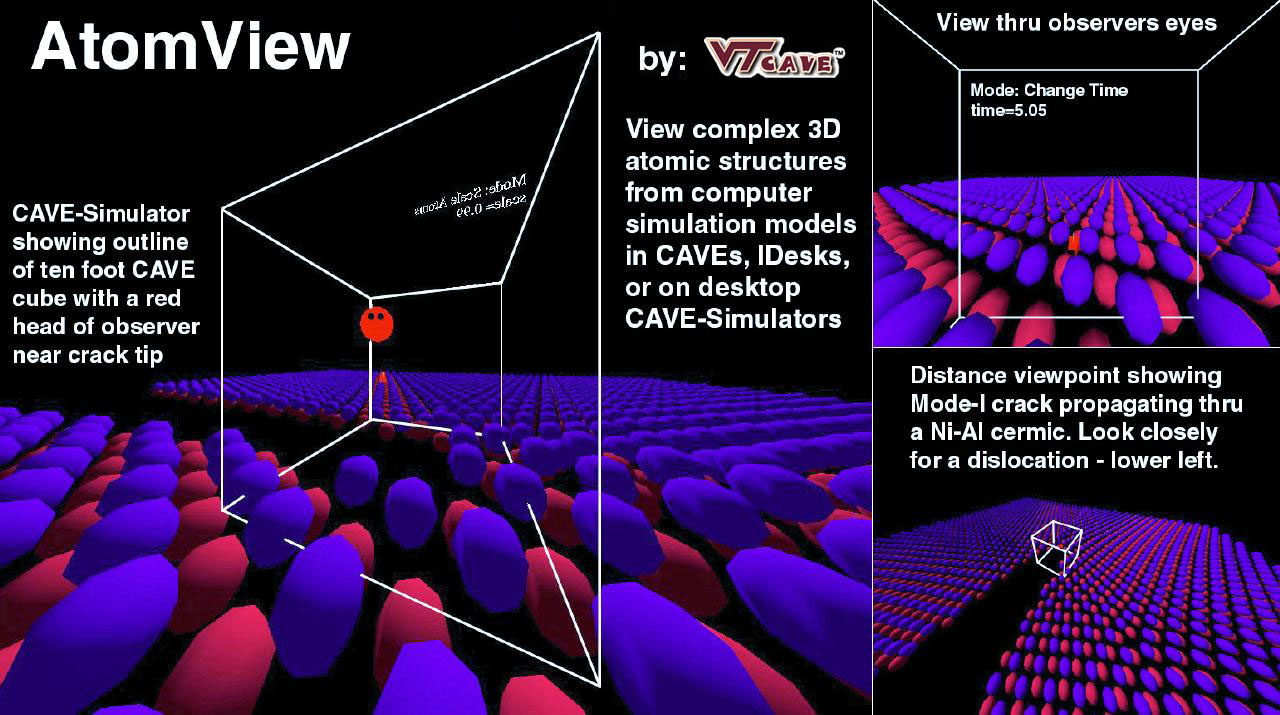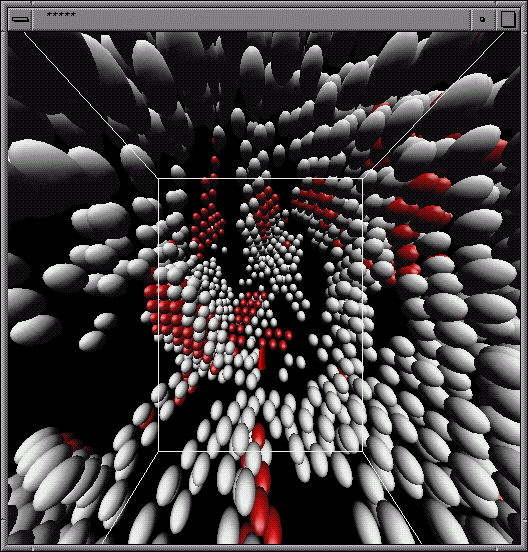
 |
Current Version:
This site was last updated on March 15, 2001
|
|
With AtomView material scientists can analyze and interpret physics based
computer simulations of simple ceramic nanostructures. AtomView was featured
in the ACCESS Magazine, May 8, 1998, "
A New View on Atoms".
This site provides download access, as well as instructions on installation and how to use it. Specifically AtomView was desgined to enhance scientific analysis of complex 3D structures that can be viewed in CAVEs, IDesks, and SGI desktop workstations with a CAVE-Simulator. A good example of an AtomView simulation is shown in the animation on the right where Dr. Diana Farkas, Professor in the Department of Material Science and Engineering at Virginia Tech, and Dr. Helena Swygenhoven from the Paul Scherrer Institute in Switzerland, simulated the formation of stacking faults in Nickel at grain boundaries. AtomView was also used by students in the NSF-Combined Research Curriculum Development (CRCD) class Fall semester, 2000. Atomview itself takes in data files with the positions and the models of the atoms you wish to use. You may input as many data files as you want indicating different positions for the atoms and these files can then be viewed in sequence to show a timeline of events in the atomic structure. |

|
Functionality includes the ability to scale the entire model as well as the individual atoms, view the different data files in a continuous stream and the ability to navigate about the atomic structure. Because the data format for AtomView is compatible with MSI software, therefore AtomView files can be loaded into MSI's WebLabViewer and functionality extends to viewing these same files at desktop Windows workstations.
Future development of AtomView will merge the CAVE Collaborative Console (
CCC)
and AtomView into CCC_atom.
CCC_atom allows users, connected by the network, to collaboratively interpret
and analyze their computer simulations at their desktops, on IDesks, or in
the fully immersive environment of a CAVE.
Closely associated with AtomView is the Network Programming Interface Builder
(NPIB) that allows
users to organize, submit, and analyze their supercomputer legacy code
simulations within an interactive Web-basesd Java interface.
For example NPIB was used to predicted crack growth in a
Ni-Al
B2 structure based on legacy code developed by members of the
Center
for Modeling and Simulation in Materials Science (CMSMS).
Our future plans are to use DIVERSE's dgiGL so that the collaboration can
be extended to include researchers and students running Windows or Linux on Intel
workstations. Together CCC_atom and NPIB can be used as productivity
tools for materials researchers.
Pages written by
Ron Kriz,
http://www.sv.vt.edu/future/cave/software/atomview/atomview.html